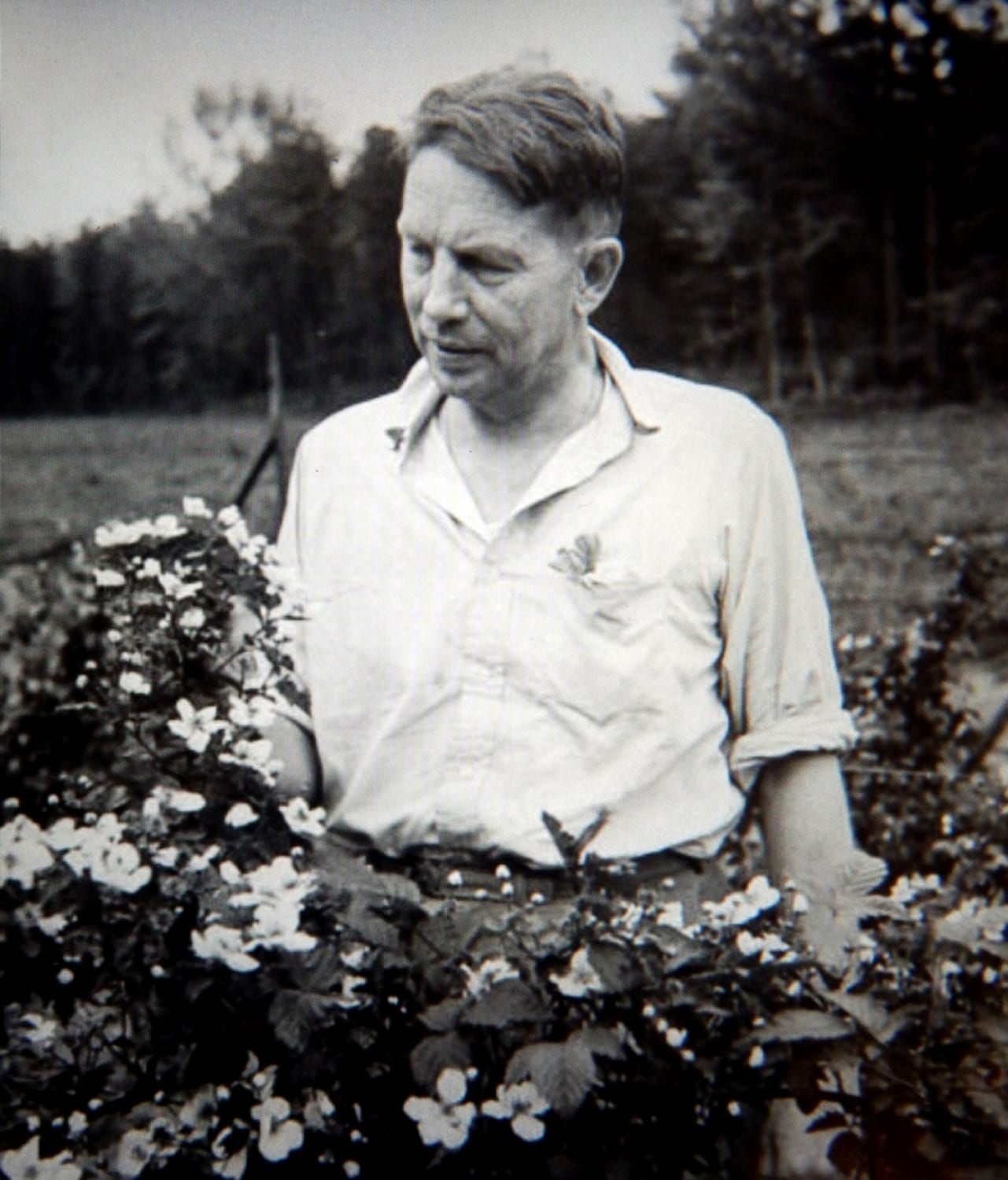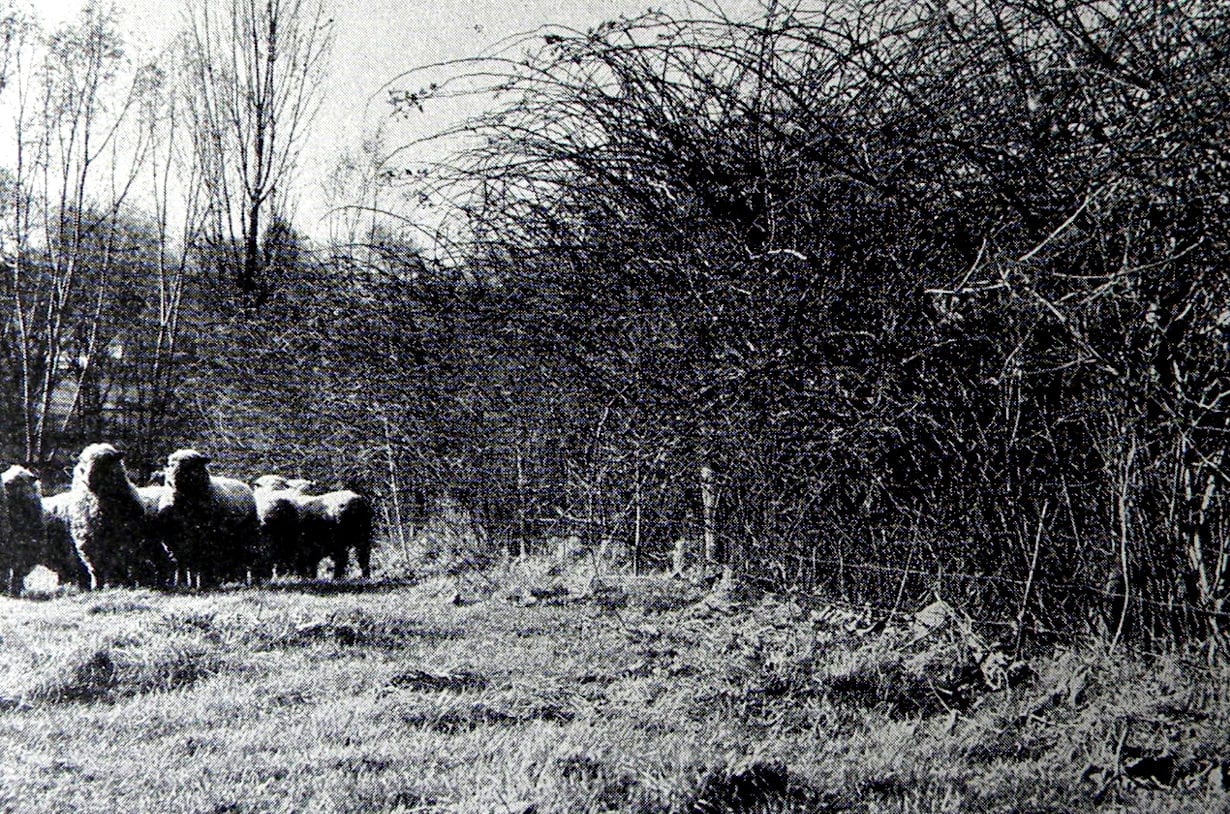As a tour guide in the Big House at Malabar Farm State Park one of the most frequent comments I would hear from guests was,“Yeah, Louis Bromfield, he’s the guy who gave us multiflora rose!” My usual response would be, “Yes. . . and no.” Louis Bromfield did promote the use of multiflora rose as a natural fence and cover for wildlife, but he was not the primary villain in this environmental mistake. His fundamental responsibility was using his name and the fame of Malabar Farm to promote it.
In the early 1940s the U. S. Conservation Service and various state conservation and wildlife agencies were promoting multiflora as an ideal alternative to traditional post and wire fences; an alternative that would also serve as a food source and shelter for wildlife. Louis, having lived in France for many years, was familiar with Europe’s natural hedge rows and thought the idea a good one for America’s farmers. He began planting the roses at Malabar Farm as early as 1944 and wrote glowingly of it in his second non-fiction farm book 1948’s Malabar Farm.
“Certainly the virtues of Rosa Multiflora in any wildlife or good land use program, deserves a paragraph. It is an extremely hardy and thorny rose. . . After a few years its growth becomes so thick and thorny as to be impenetrable save for small animals and birds. An experimental planting at Malabar produced at the end of three years a hedge effective enough to turn cattle. . . Each year it sends up more and more shoots which turn woody and extremely thorny.
In June it produces great panicles and sprays of tiny white roses each centered by a large cluster of gold-dusted anthers. Gradually we are working out a program of multiflora rose not only as use in game shelter. . . but as a means of replacing expensive wire fencing. . . over a period of ten years or more we should have thick growing fences. . . a barrier which is there forever.
It has other virtues as well as those as a hedge and shelter for it produces immense quantities of small rose pips [hips] much appreciated by quail, pheasants and other wild birds.”
Unfortunately, multiflora rose is an invasive species, originally introduced into the United States in 1866 as a garden ornamental from Japan and Korea. It can produce a half-million or more seeds from its hips in a year. Birds feed on these seeds and then through their droppings scatter them indiscriminately across the landscape. Louis Bromfield did promote the use of multiflora rose as a natural fence and cover for wildlife, but he was not the primary villain in this environmental mistake. His fundamental responsibility was using his name and the fame of Malabar Farm to promote it.
In the early 1940s the U. S. Conservation Service and various state conservation and wildlife agencies were promoting multiflora rose as an ideal alternative to traditional post and wire fences; an alternative that would also serve as a food source and shelter for wildlife.
Louis Bromfield has been described as one of the founding fathers of the modern environmental movement, his writing and speaking on environmental stewardship predating Rachel Carson by nearly twenty years. Sadly, he, like many others of his day who expressed similar conservation minded sentiments failed to understand the potential for serious negative consequences when introducing non-native species into a new environment. Today’s farmers, landscape managers, environmentalists, and recreational hikers are paying the price for this “blunder.” Nine years after Louis’s death the editor of the January 1965 newsletter for the original Louis Bromfield Malabar Farm Foundation was still promoting the benefits of multiflora rose.
“You see miles of multiflora rose fence, where, in the spring, a mantle of white and pink velvet is laid on it. In the summer it is a haven for song birds to nest and to feed on insects, which could plague man’s work with crops.”
So, yes Louis Bromfield must bear some of the responsibility for the spread of this noxious invasive, but certainly not alone, and certainly not the heaviest portion of the blame.



